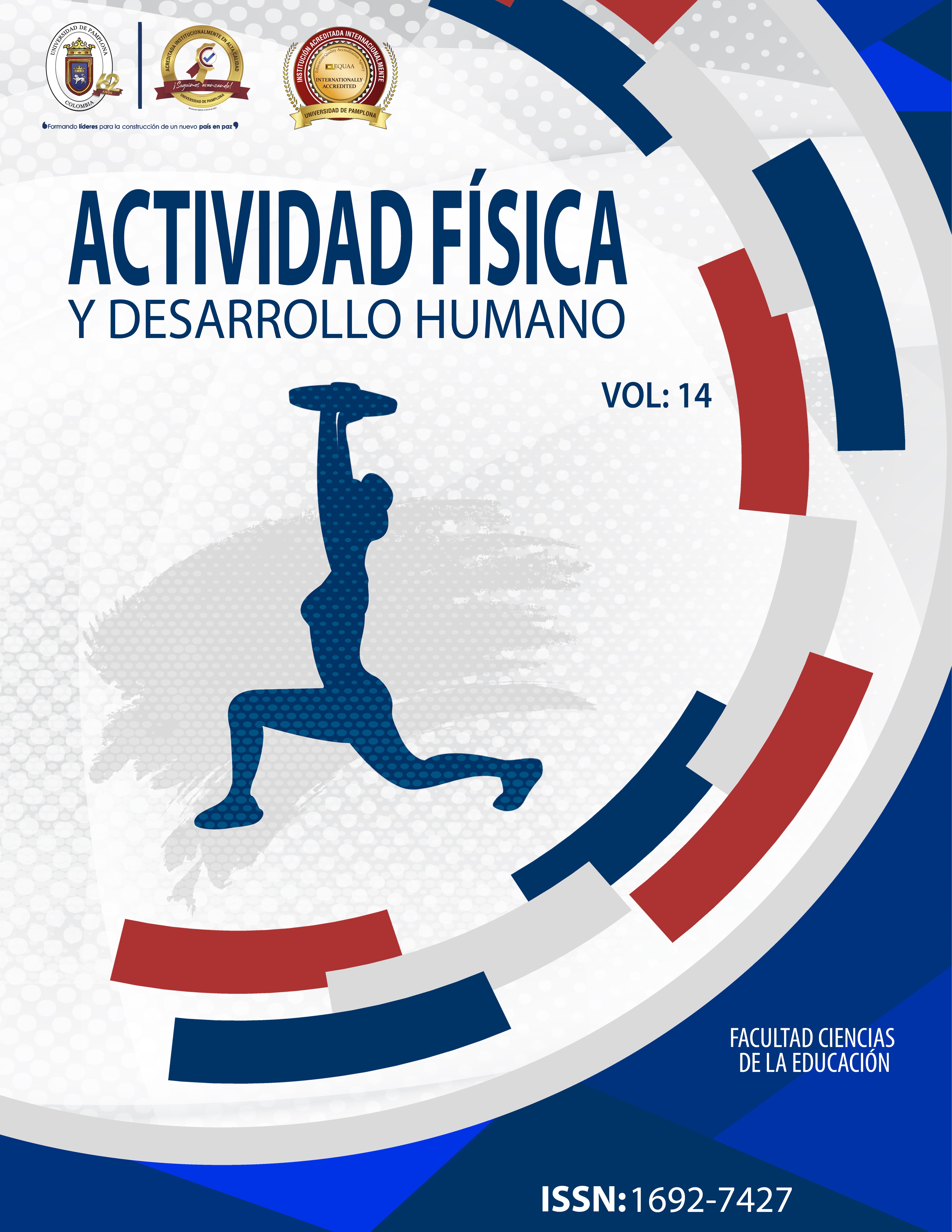Gamification in the maturation processes of gross motor skills in children of the second grade of the estrella del sur school ied
DOI:
https://doi.org/10.24054/afdh.v14i1.2502Keywords:
Gamification, gross motor skills, motor developmentAbstract
The general objective of this research is to enhance the maturation processes of gross motor skills in boys and girls of the second grade of Colegio Estrella del Sur IED, using gamification as a didactic strategy. The study involved students from the 201st grade, 6 boys and 4 girls, their ages range between 7 and 8 years old. The research uses a mixed methodology, the instruments used in this study were the observation card, a structure that allows observing and analyzing the reactions of the participating students to the dynamics established during the implementation of the didactic sequence. Another instrument used was the motor skills test for elementary school, applied at the beginning and at the end of the implementation of the didactic sequence to analyze the motor development of the children in an appropriate classroom environment. Finally, an evaluation matrix called LORI was also used, which contains clarity in nine items that are welcomed in the present research because it will facilitate the evaluation of the didactic strategy. The findings of this research were: the participants demonstrate skills for the use of technologies and the exploration of gestures necessary for the use of video games. Additionally, it was possible to perceive the level of interest presented by the group, the ability to listen improved, the gamification in the learning process improved, and the use of video games in the learning process improved.
Downloads
References
Amador, E., Gómez, M., & Montealegre, L. (2013). Habilidades motrices en niños de 6 a 13 años del Colegio Meira Del Mar de Barranqulla. Ciencia e Innovación en Salud.
Antoranz, E., & Villalba, J. (2010). Desarrollo cognitivo y motor. España: Editex.
Berruezo, P. (2008). Los contenidos de la psicomotricidad. Reflexiones para la delimitación de sus ámbito. Revista Interuniversitaria de Formación del Profesorado, 19-34.
Burke. (2012). Gamificación 2020: what is the future of gamification? Stanford: Gartnet.
Cabero, J. (1998). Las nuevas tecnologias de la información y la comunicación: aportaciones a la enseñanza.
Caldero, F. (2002). Neurofisiología aplicada al deporte. España: Tebar.
Cameron, R. (2009). The use of mixed methods in VET research [El uso de métodos mixtos en la investigación vocacional]. Obtenido de https://avetra.org.au/
Hernández Sampieri, R., Fernández Collado, C., & Baptista Lucio, P. (2014). Metodología de la investigación . México: McGraw- Hill.
Hernández, S., Fernández, C., & Baptista, L. (2014). Metodología de la investigación. Mc Graw Hill.
Martinez, F. (1994). Investigación y nuevas tecnologías de la comunicación en la enseñanza: el futuro inmediato. Pixel- Bit. Revista de medios y educación, 3-17.
Melchor. (2012). Gamificación y e-learning: un ejemplo con el juego del pasapalabra. Innovation Forum, 137-144.
Moscolini, N. (2005). Complementación metodológica para el análisis de datos cuantitativos y cualitativos en evaluación educativa. Revista Electrónica de Metodología aplicada, 10(2), 1-10. Obtenido de http://www.psico.uniovi.es/rema/v10n2/moscoloni.pdf
Piloña Ortiz, G. A. (2016). Métodos y técnicas de investigación documental y de campo. Guatemala: GP Editores.
Rigal, R. (2006). Educación motriz y educacion Psicomotriz en preescolar y primaria. INDE: Barcelona, España.
Sánchez Duarte, E. (2008). LAS TECNOLOGÍAS DE INFORMACIÓN Y COMUNICACIÓN (TIC) DESDE UNA PERSPECTIVA SOCIAL. Revista Electrónica Educare, 155-162. Obtenido de https://www.redalyc.org/arti
UNIR. (13 de Octubre de 2020). La gamificación en el aula: qué es y cómo aplicarla. Obtenido de UNIR. La universidad en Internet: https://www.unir.net/educacion/revista/gamificacion-en-el-aula/
Downloads
Published
Versions
- 2023-07-31 (2)
- 2023-08-24 (1)
How to Cite
Issue
Section
License
Copyright (c) 2023 ACTIVIDAD FÍSICA Y DESARROLLO HUMANO

This work is licensed under a Creative Commons Attribution-NonCommercial-NoDerivatives 4.0 International License.











